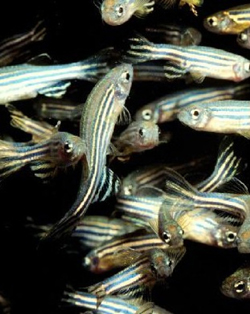
Zebrafish will soon be housed and studied in Light Hall after an extensive renovation. (Courtesy Space and Facilities Planning)
Move out the mice, bring in the zebrafish
There’s something fishy going on in Light Hall — zebrafish to be specific. Approximately 90,000 zebrafish will soon make Light Hall their new home. Vanderbilt will be renovating the first floor vivarium, which currently houses mice, into a state-of-the-art aquatic genetics facility, specializing in the study of zebrafish. Construction is expected to begin in April.
Currently, zebrafish are housed in Stevenson Hall, in a relatively small area with out-of-date equipment. The Light Hall project will include the renovation of 2,500 square feet, which will expand the zebrafish holding capacity, provide state-of-the art care of the fish and enable the growth of research efforts. Vanderbilt researchers anticipate the enlarged capacity will support new faculty recruitment and increase the prospects for extramural research funding.
Zebrafish are an important tool for genetics, developmental biology and genomics. Since zebrafish embryos develop externally and are transparent, the development of the vertebrate animals can be directly observed. Other advantages include their small size — about one inch at adulthood, their rapid lifecycle — approximately two-and-a-half months, and the relatively low purchase price.
Upon completion in February, the aquatic genetics facility will be among the largest in the United States.













